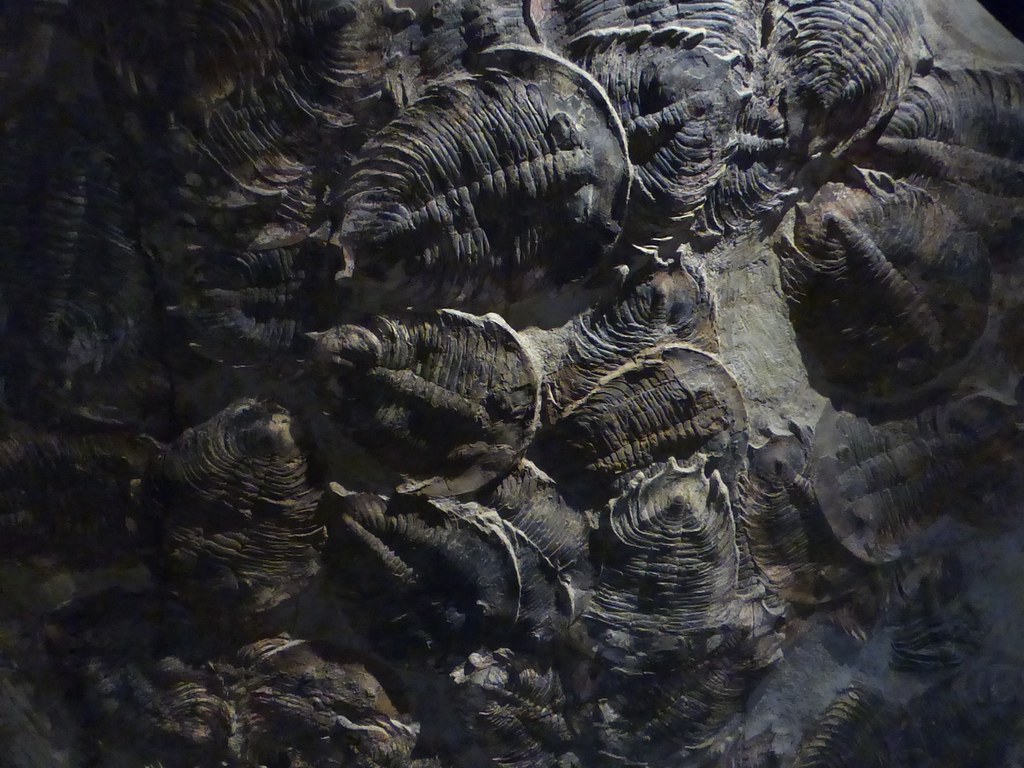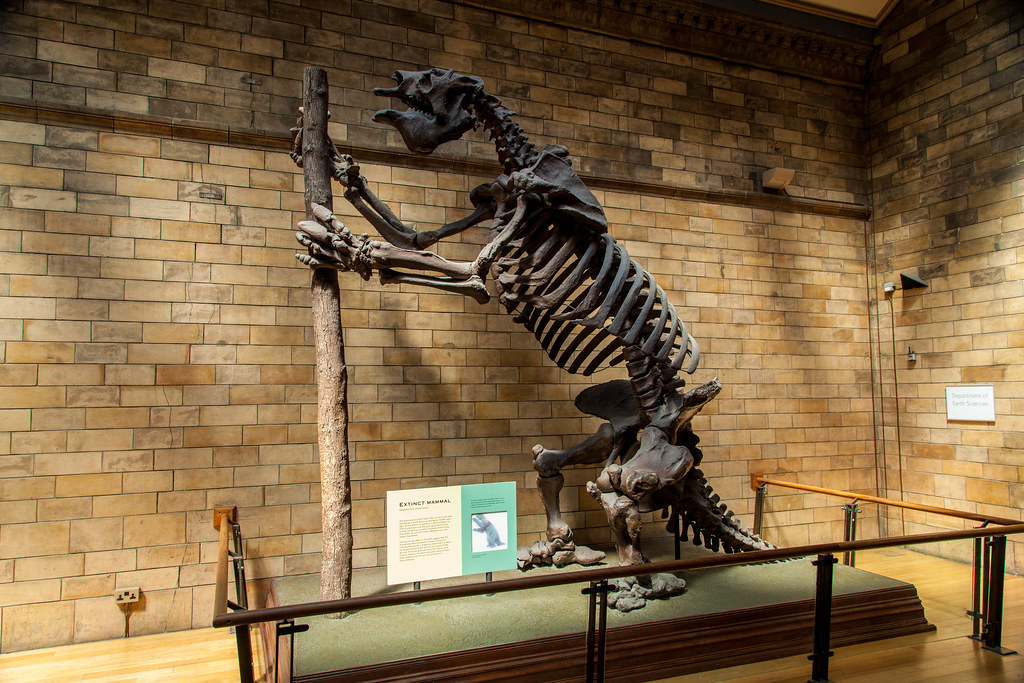What are we walking on?
How often do you think about the earth beneath your feet? While you move about your day do you consider who owns the land you’re walking on? Do you think of who used to own that land? What about what that land was like before anyone owned it?
When we study the environment, we often study the here and now: what’s growing in this forest now, what is the pH of this stream today, how is the water flowing through our watershed? These questions are important, but we often forget about our environment’s history. The impact of glaciers on our landscape in the past tells us a lot about how water moves today. To know why our forests grow the way they do , we have to know how the forests used to be–if they even were forests! The pH of a stream is more meaningful when you have its past values to compare it to.
A long, long time ago
From fossil records and geologic surveys, we can tell that Ohio used to actually be covered with water. An incredibly long time ago, what is now Ohio was just south of the equator and part of the ocean floor.
What effect do you think this could have on our current environment? How might our land having previously been at the bottom of an ocean affect what’s here now? Tell us what you think in the comments.

Eventually, this ocean transformed several times. It became a warm, shallow sea with coral reefs and lots of fish. Later, those seas retreated. This area became largely covered by swamps, marshes, and deltas, home to animals like reptiles and amphibians.
This is why the bedrock in our area is similar to what you find on the ocean floor. We have sedimentary rocks like limestone and sandstone. These rocks form from years of pressure on top of layers of sediment, just like at the bottom of the sea. Knowing about the past helps understand why you can find fossilized shells and hardened sand in Ohio!
A long time ago
During the time of dinosaurs, there isn’t very much scientific information on what was happening in Ohio. Scientists have discovered dinosaur fossils from this era in other parts of the country, but not from where we’re standing now. We don’t know why for sure, but the most common idea is that there was a lot of erosion (wearing away of sediment and rocks) in Ohio during this period. The erosion erased records like fossils of any of the plants and animals of that time.
So, we can make educated guesses about what happened here during the dinosaur eras, but the guesses are limited by a lack of information. Go out searching in your neck of the woods: if you find a dinosaur fossil you could be the cause of an enormous scientific breakthrough!
A little while ago
The next big change for Ohio came with the glaciers of the Ice Age.
If you’ve traveled through Ohio, you might notice that most of it is incredibly flat–except for where we live, in the southeast. This is due to years and years of flattening, scraping, and carving from giant sheets of ice constantly expanding and receding during the Ice Age. Those glaciers wore down most of Ohio. But the glaciers didn’t reach as far as places like Athens, Marietta or Chillicothe–that’s why our area is so much hillier than the rest of the state!
At the end of the Ice Age, the land at the ends of the glaciers would have looked a lot like places that are far to the north today, like Canada, Alaska, or Russia. There were tundras and boreal forests.
Roaming the tundra and forests were great big animals, often described as “megafauna” (mega – big, fauna – animals), roaming Ohio. There were giant sloth, giant beaver, and mastodons! Last year, a 12-year-old boy even found a mastodon tooth while playing in a creek in Holmes County.
These were the beginnings of our native forests today , like Wayne National Forest right here in SE Ohio! How do you think these great creatures could have affected our forests? How might we still see any of those impacts today?

This is the time when the first humans showed up in Ohio. People followed their prey–the megafauna–across the Bering land-bridge to make it from Asia to the Americas. Our forests have changed alongside us; our cultures and ways of life changed with them. We still see some remnants of this period in our forests today. But they have gone through so much change since the arrival of humans that it can be difficult to recognize
A little more recently
As one of the top predators in recent history, humans have had an enormous impact on the world around us. What we chose to hunt and gather over the years has impacted which species grow or go extinct.
What kind of choices do we make now that have an impact on our environment? Are there any changes that you have noticed during your lifetime? Is there a species that you used to see all the time that now seems quite rare, or is the opposite true of any plants and animals that you know?
Believe it or not, the ecosystems we have around us now emerged very recently. Even the forests you see here might have been clear cut for timber 50 to 100 years ago, so different plants and animals live in them than in older forests. While humans have always had an impact on their environment, our recent history has left some scars on our land that we are now trying to fix. Other choices we make can help forests grow strong again. What choices do you see that help or hurt our ecosystems here?
Getting what we need to live will always impact the ecosystem around us. But it is important for our relationship with the environment to be symbiotic (mutually beneficial, or good for both sides).
If you’d like to learn more about the early people of this area, you can check out our Appalachian Ohio Culture Virtual Field Trip. We talked to Paul Patton, an archaeologist who has focused on the first people of SE Ohio, and Jon Sowash, the current owner of the historic Eclipse Company Town.
Wayne National Forest
The history of Wayne National Forest is an interesting one. This area was highly coveted by early colonizers for lots of different natural resources. While the SE Ohio woodlands and streams were highly regarded for their value, they weren’t always treated very well. Watch this documentary to learn about the history of natural resource extraction and how Wayne National Forest came to be!
You can also learn more about the history and culture of these woodlands here on the Wayne National Forest site!
Have you been out to the Bailey’s Tract yet? The Wayne just recently opened several miles of Mountain Biking and multiple-use trails in the Chauncey-Millfield area. Check out the latest addition to one of Southeast Ohio’s most important environmental successes when you have time!
Your turn: what’s your history?
- How far back can you remember? When were your first memories? Write them down or talk to a friend or family member about them.
Mine are from the year 2000. Anything that happened before that is something I had to learn from someone else!
A lot of what I just shared about our history we learned from super cool science tricks. But we also learn about history through the telling and re-telling of stories. Information passes down from generation to generation through language. People hold onto stories just like rocks hold onto fossils. - Try to find out more about the history of your family!
Interview an older family member to find out where they’ve lived , what jobs they’ve had, how they’ve seen the areas where they’ve grown up change. Maybe they experienced some of the the history I talked about above!
If possible, try to create a timeline for your family. Do you know how your family came to America? Or have they always been here? Did you move to where you live now during your lifetime, or do you still live where you were born?
Understanding the context of your life and of your family can help you to understand why things are the way they are now. Maybe your grandparents talk a bit differently than you, maybe that’s because you learned to talk in a different place than they did! When you understand history, everything in the present starts to make more sense.
4 replies on “What did Appalachian Ohio use to look like? History time!”
I loved reading this!
I loved reading this for my report thankyou Nate Good
same
vary helpful